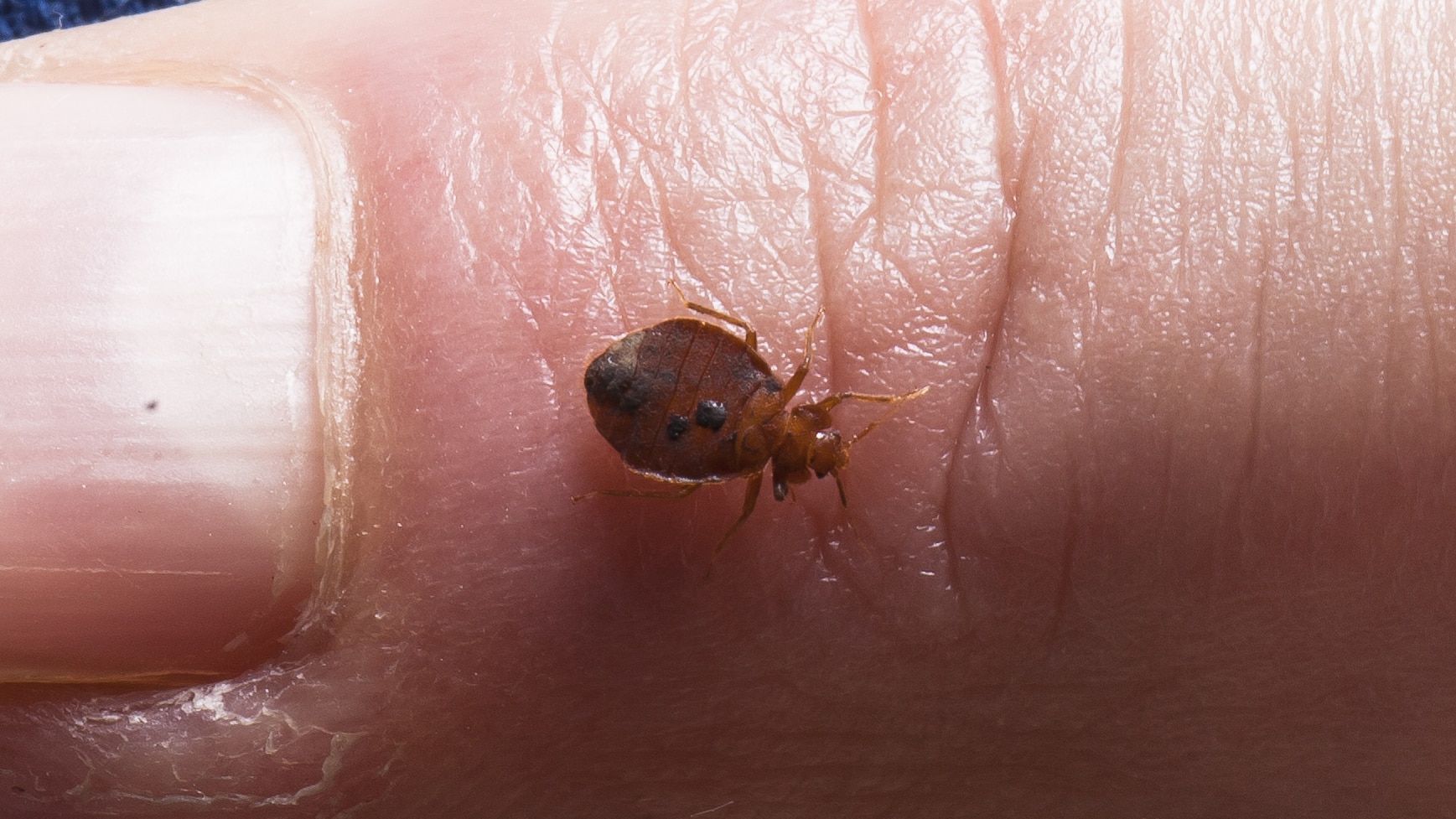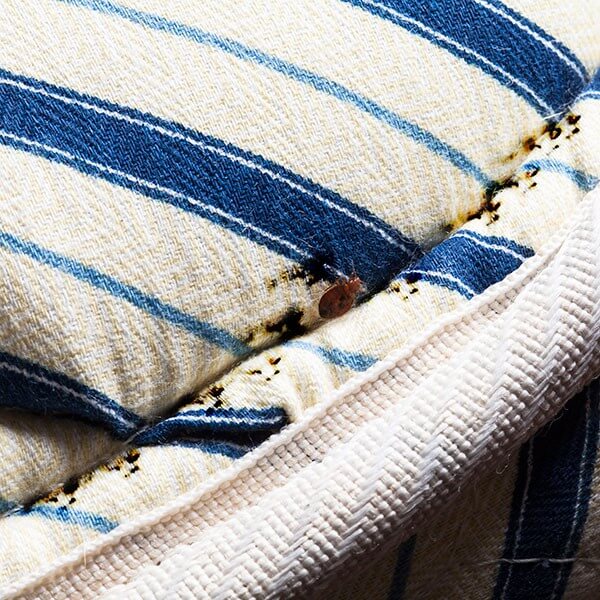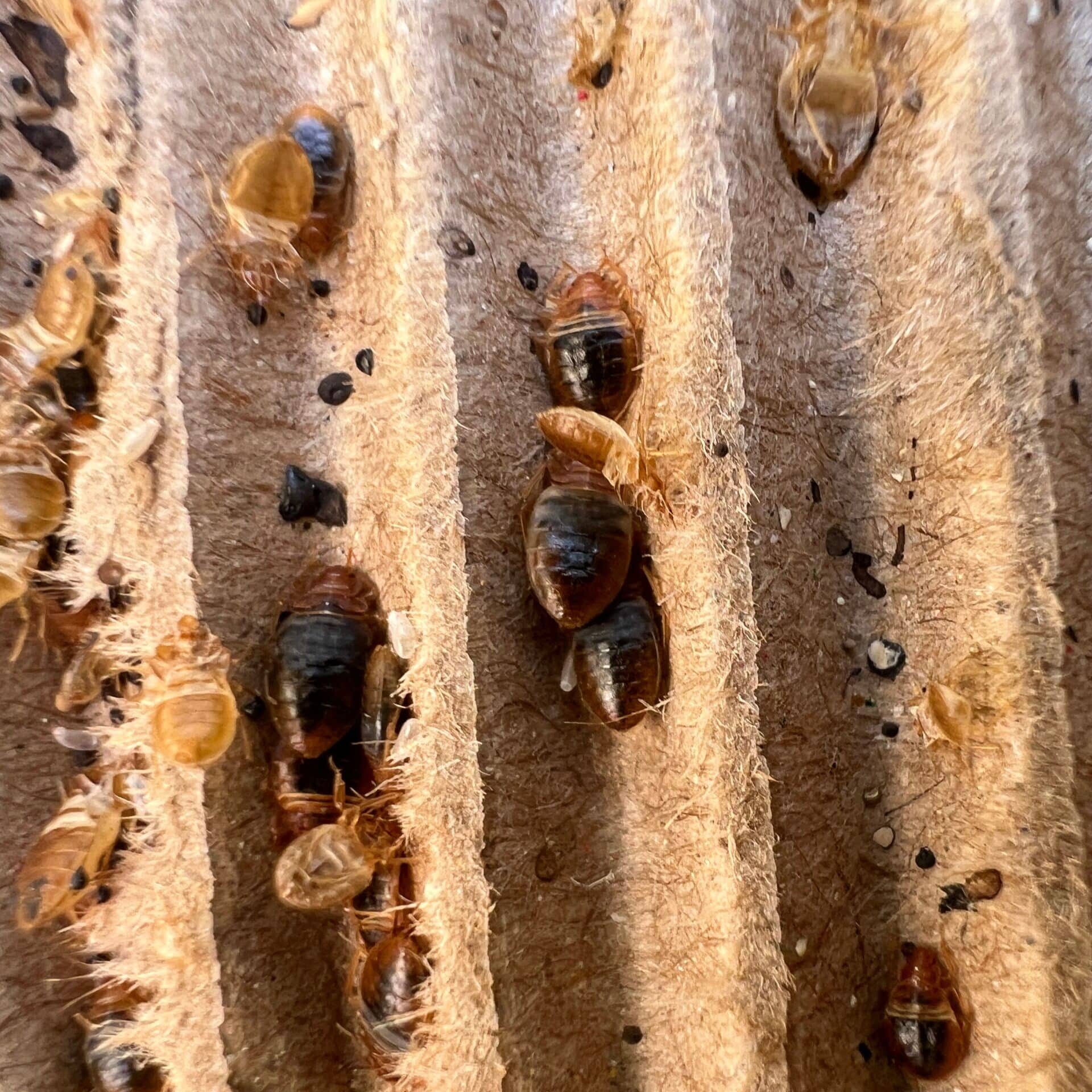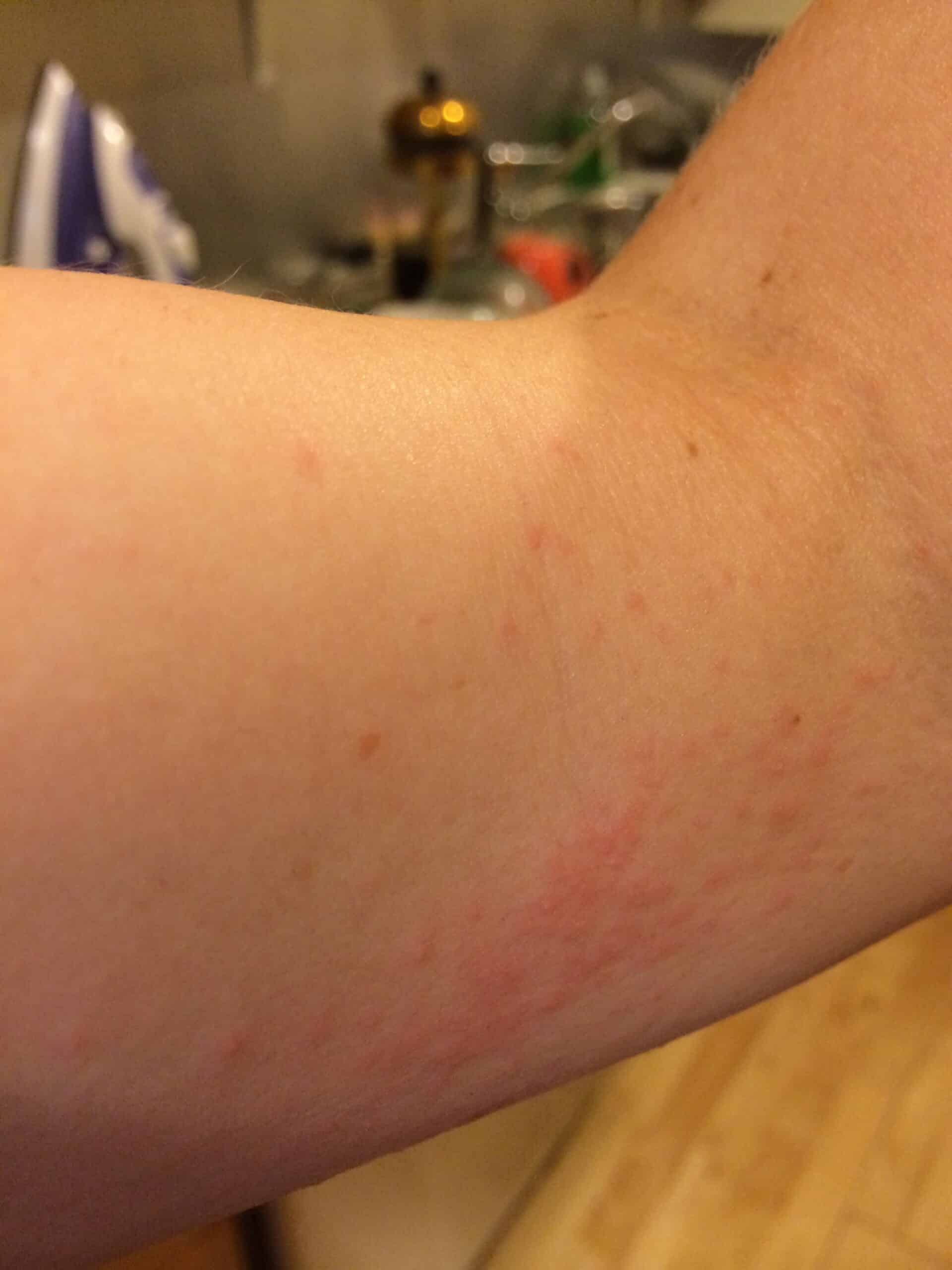
In the article
Finding bed bugs early is vital to preventing a full-blown infestation. These pests are masters of concealment, making detection challenging but crucial. With numbers increasing across Australia, Understanding how to look for them is the first step in effective management.
The Importance of Early Detection
Early detection significantly reduces the difficulty and extent of necessary treatment, minimising the risk of a spread to other areas or even your neighbours. Being proactive in finding bed bugs saves time and effort, helping with maintaining a healthy, pest-free environment.
In this guide, we’ll explore techniques and tools that answer the question of “how do you find bed bugs?”. We’ll cover D0 It Yourself treatments, common hiding places, and more.
Finding Bed Bugs in Common Hiding Places
Typical Habitats of Bed Bugs
These nocturnal, elusive bugs prefer dark, hidden spots close to their food source – you! Understanding bed bug hiding places is essential in detection.
Bedroom and Sleeping Areas: The most common spots are around the bed, specifically the seams of the mattress, bed frames, headboards, and bedside tables. They also hide behind wall fixtures, within electrical outlets, and under loose wallpaper.
Upholstered Furniture: Sofas, armchairs, and other upholstered furniture, especially those regularly napped on, are ideal hiding spots.
Carpets and Rugs: The edges of carpets and rugs, particularly those near sleeping areas, often harbour the bugs.
Clothing and Luggage: These critters can hide in the folds and pockets of clothing and luggage, especially if stored near sleeping areas or frequently used for travel.
Behind Wall Hangings and Picture Frames: The pests often live behind pictures, posters, and other wall hangings, especially when near beds or resting areas.
Cracks and Crevices: Any small crack or crevice in walls, flooring, or furniture can serve as a hiding place.
When inspecting, use a flashlight and a magnifying glass for examination, paying close attention to seams, folds, and crevices. A bed bug UV detection light can also be useful in these inspections, making the bugs more visible.

Bed Bug Poo On Mattress
Signs and Symptoms of Bed Bugs
When answering the question, “How do I find bed bugs?”, it’s crucial to be aware of signs and symptoms they leave behind. These bugs are small and difficult to spot but also leave behind distinct clues.
Physical Signs of Bed Bugs:
Small Rust-Colored Stains: These stains, often found on bedding or mattresses, are caused by bugs being crushed or their excrement.
Tiny White Eggs: Their eggs are about the size of a pinhead, pearl-white, and generally found clustered in their hiding places.
Live Bed Bugs: Adult bugs are small (think apple seed-sized), flat, and oval-shaped, with a reddish-brown color.
Exoskeletons & Poo: As the bugs grow, they shed their skin, leaving behind exoskeletons around their hiding spots.

Bed Bugs, Exoskeletons And Poo
Symptoms of a Bed Bug Infestation:
Bite Marks: Bed bug bites often appear as small, red, itchy welts, in either lines or clusters, generally found on exposed areas like the arms, neck, and face.
Unexplained Itching: If you wake up with itchy patches you didn’t have before going to sleep, especially if you detect other signs of the bugs, it can indicate their presence.
Distinctive Odor: A heavy infestation can produce a musty, sweet odor caused by their scent glands.

Bed Bug Rash
How Do You Find Bed Bugs
Detection can be completed using practical tools and methods, which can be equally simple and effective in uncovering hidden infestations.
- Flashlight and Magnifying Glass:
A flashlight and a magnifying glass are great for inspecting hiding spots, and helping with spotting bugs, eggs, and exoskeletons in dark, small spaces.
- Bed Bug UV Detection Light:
UV lights make the bugs more visible due to their reflective exoskeletons – particularly useful when inspecting bedding, furniture, and walls.
- Barrier Tape or Sticky Traps:
Placing bed bug barrier tape around the legs of beds and furniture, strategically traps bugs trying to find homes or food.
- DIY Bed Bug Interceptors:
Our bed bug interceptors range, placed under the legs of beds or furniture, can trap bugs as they attempt to climb up or down. These can be made using simple household items or bought for installation.
- Heat and Steam:
These bugs are sensitive to extreme temperatures. Using a steamer on mattresses, furniture, and other hiding spots can help expose and kill them.
Professional Help: When to Ask ‘How Do You Find Bed Bugs?’
There comes a point in searching for an infestation when you might need to turn to professionals. While DIY methods are generally handy for dealing with the bugs, sometimes it can be hard to find all of their hiding spots.
Identifying the Need for Professional Help:
Recurring Infestations: If you’ve dealt with infestations before and they keep coming back, professionals can identify the root cause.
Difficulty in Locating the Source: Sometimes, insects hide in unusual places but professionals have the experience and tools to find these hidden infestations.
What to Expect from Professional Bed Bug Inspections:
Detailed Inspection: Professionals inspect not just the obvious areas like furniture, but also less obvious spots like baseboards, outlets, and picture frames.
Use of Specialized Tools: Experts often use advanced tools like detection dogs, infrared cameras, and industrial-strength UV lights to uncover even the most well-hidden infestations.
Developing a Treatment Plan: Based on the inspection, professionals can devise a DIY treatment plan tailored to your situation.
Follow-up Inspections: Most professional services include follow-up visits to ensure that the infestation has been completely eradicated.
Bed Bug Prevention Strategies
It’s important to understand that knowing how to avert infestations effectively with prevention strategies significantly reduces the need for treatment plans.
- Regular Inspections:
Conducting regular home inspections, especially sleeping and resting areas, is crucial. Look for early signs of bed bugs to catch any infestation at its onset.
- Travel Wisely:
When traveling, inspect hotel rooms for telltale signs, keep luggage on racks rather than on the floor or bed, and even use luggage protectors. Upon return, wash clothing in hot water and vacuum suitcases.
- Mind Secondhand Items:
Be cautious when bringing secondhand furniture, clothing, or other items into your home, thoroughly inspecting and cleaning everything before it enters your living space.
- Reduce Clutter:
A cluttered home provides more hiding places for bugs. Tidier, more organized spaces make it easier to spot and address any signs of infestation.
- Bed Bug Proofing:
Invest in specialized bed bug proof mattress encasements. These can prevent infestations in your bedding and aid in early detection.
- Educate Yourself and Others:
Awareness is a powerful first line of defense. Educate yourself and your family about the bugs, their habits, and signs.
- Immediate Action on Signs:
If you do notice signs, act fast. The quicker you address the problem, the easier it is to manage.
Answering ‘How Do I Find Bed Bugs?’ in Different Settings
Finding infestations can be different depending on the environment, with homes, hotels, and public spaces each presenting unique challenges when it comes to detecting pests.
In Homes
- Bedrooms and Living Areas: Inspect beds, furniture, and linens, paying special attention to seams, folds, and hidden areas.
- Cluttered Spaces: Reduce clutter to minimize hiding spots, including items stored under beds and in closets.
- Shared Walls: In apartments or townhouses, inspect shared walls, as bugs often migrate from neighboring units.
In Hotels
- Initial Room Inspection: Upon entering a hotel room, inspect everything, including mattress seams, headboards, and bed frames. Also check chairs, sofas, and curtains.
- Luggage Safety: Store luggage on a rack or in the bathroom, away from potential hiding spots.
- Post-Travel Precautions: When returning home, launder clothes and inspect luggage before bringing it inside.
In Public Spaces
- Seating Areas: Be cautious when sitting in places like theaters or public transport, inspecting seats, and avoiding placing belongings on upholstered surfaces.
- Personal Items: Regularly clean daily items such as bags and coats, especially if they’ve been placed on the floor or in shared storage areas.
General Tips for All Settings
- Visual Inspection: Begin with a thorough inspection, using a flashlight and magnifying glass if necessary.
- Smell: Be aware of the odor that indicates a heavy infestation.
In conclusion, understanding “how do you find bed bugs” across different settings is crucial in the fight against these persistent pests. For more detailed insights, effective solutions, and professional advice on detection and prevention, check out the Bed Bug Barrier blog today.
Are You Looking for an Organic DIY Treatment?
Watch Our DIY Treatment Video For An Ensemble Bed
Watch Our DIY Treatment Video For A Bed with Slats
If you have enjoyed our blog ‘How Do You Find Bed Bugs,’ then you might like to read ‘Do Bed Bugs Live in Hair?’



Leave a Reply